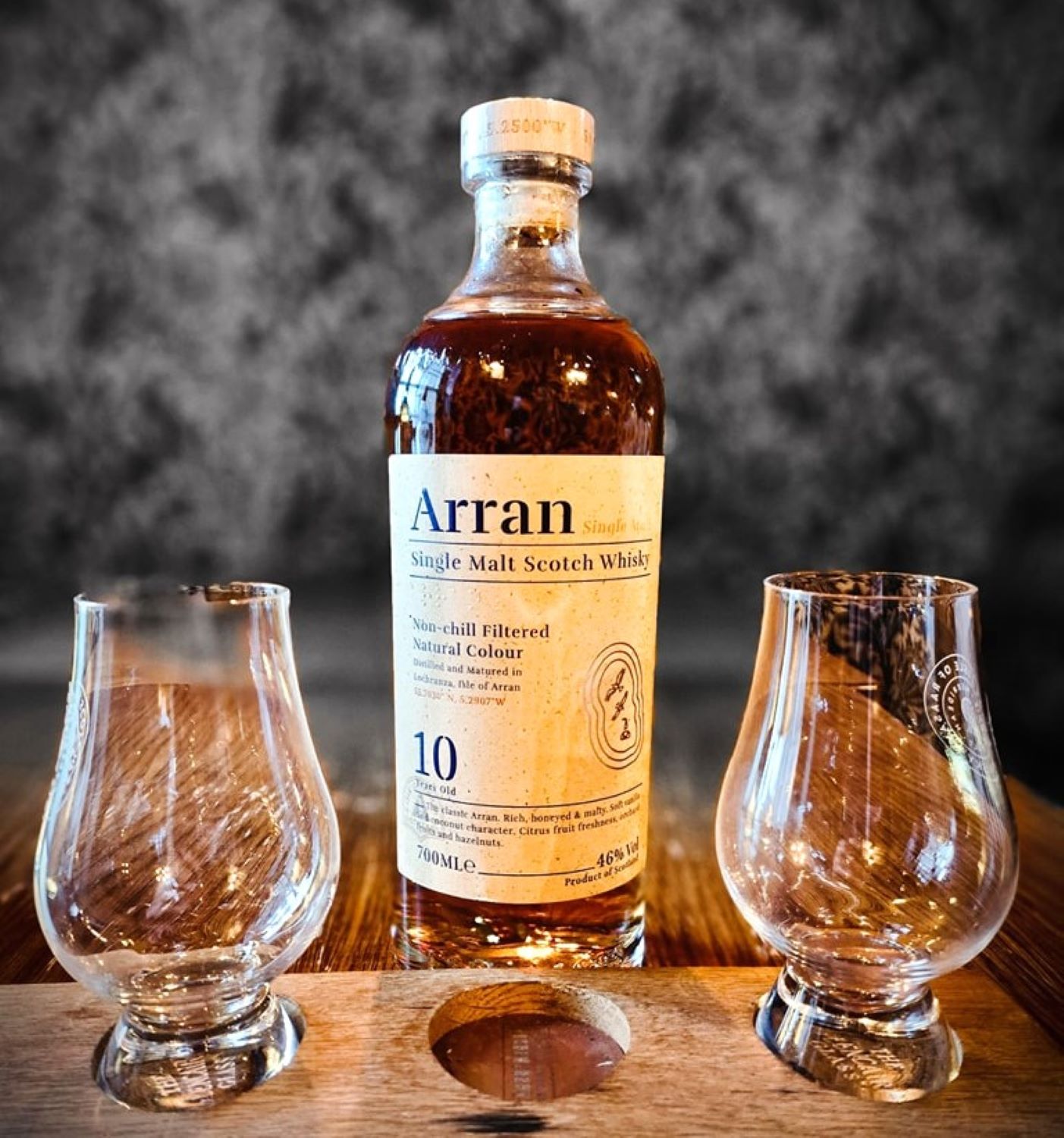
My career in the whisky industry began in 2003. Interestingly, it has run in parallel with the Isle Arran Distillery for the last 20 years.
I was a fan of Arran and its single malt even before the launch of their first 10-year-old whisky in 2006. I celebrated along with them as their whisky passed milestone after milestone; 12, 14, 16, 18, 21, and 25 years of age…It is amazing to think that in just a few short years the oldest casks in its warehouse will turn 30!
The island itself sits in the Firth of Clyde, snugly set between the Kintyre Peninsula on Scotland’s west coast and the Scottish mainland. Its proximity to Glasgow, only about 50km northeast as the crow flies, and its rugged coast made it a haven for illicit distilling and smuggling in the 19th century. While Arran had one short-lived, licensed distillery at Lagg from 1825 to 1837, the island was home to as many as 50 illegal distilleries in the 1800s.
Arran is often called ‘Scotland in Miniature’ – a fitting moniker, as almost everything you will find in the rest of Scotland you can find on Arran, including the Highland/Lowland boundary fault. Scenic coastlines, ancient stone circles, and historic castles? Check. Rugged mountains, beaches, and golf courses? Check. Deer, seals, eagles, and free roaming sheep? Check. And most importantly – at least in the present case – whisky distilleries? Check.
Isle of Arran Distillers has two distilleries today; Lochranza, established in 1995 at the north of the island, and Lagg, established in 2019 in the south. The driving force behind the founding of the original Isle of Arran Distillery, now known as Lochranza, was Harold Currie, a former executive with Chivas Brothers, who had long dreamed of founding his own distillery. He was initially attracted to the Lake District in Northern England, but a friend convinced him that the Isle of Arran with its thousands of seasonal tourists made for an even better bet. It turned out to be sage advice.
1993 was a curious time to consider opening a new distillery, especially on an island only accessible by ferry. The whisky industry was only in the earliest stages of recovering from the devasting collapse of 1982/1983, which saw nearly a third of all the distilleries in Scotland close. But Hal – as he was affectionately known – had a vision. As it turned out, in the end, it was the right one.

Lochranza, a sheltered bay in a tight valley at the north of the island, was chosen as the site for the first distillery. The location is indeed bucolic, but also – crucially – gave the distillery access to a consistent supply of water for production.
The first spirit flowed from the stills in August of 1995, and while it wasn’t always smooth sailing. the distillery has never looked back.
Queen Elizabeth II was on hand in 1997 to open the visitor center, and the distillery’s first whisky, a 4-year-old, was launched in 1998. In 2019, over 100,000 people visited the Lochranza Distillery – more than any other in Scotland.
Although rather modern – at least at the time it was built – Lochranza has always been run in a rather traditional way. The distillery’s production isn’t rushed, its spirit is put into good quality oak casks, and the whisky is primarily bottled at 46 per cent or higher, without colouring of chillfiltration. Today production at Lochranza is completely unpeated, but for most of the 2000s and 2010s, roughly 6 weeks of its annual production was reserved for peated malt. This ceased in 2019 with the opening of Lagg.
Both of Arran’s distilleries are on the small side by industry standards, but – unlike the industry’s old-guard, workhorse distilleries – they are not producing bulk spirit for blends. Lochranza and Lagg’s production remains exclusive to the production of single malts. Lochranza – the classic Arran malt – is light, malty, and fruity, with an emphasis on citrus notes. It does well in both bourbon and sherry casks, though its older sherry cask bottlings are the most sought-after. I am personally a huge fan!
Lagg’s whisky is a completely different animal altogether, heavily peated in a style more characteristic of smoky Islay malts. The first bottlings, a trio of 3-year-olds, were only released in 2022, but to great acclaim. As with its older sibling, a strong foundation will ensure a bright future ahead.
Both Isle of Arran Distilleries are open year-round to visitors, offering tours and tastings. While on the island, consider visiting Brodick Castle, or the Standing Stones at Machrie Moor – but make sure you have proper waterproof footwear for the latter. A hike up the Goatfel Mountain can offer breathtaking views of the island, the Kintyre Peninsula, and the Firth of Clyde, when the weather is cooperating. And while it might not be for the faint of heart, it is certainly worth the pilgrimage.
arranwhisky.com
@arranwhisky
kensingtonwinemarket.com
@kensingtonwm




















Leave a Comment